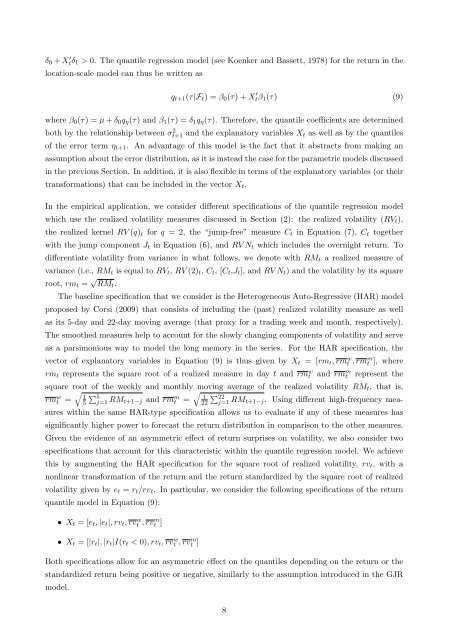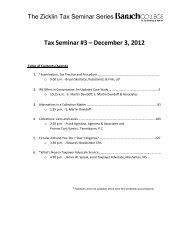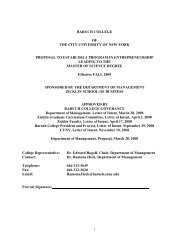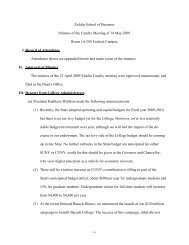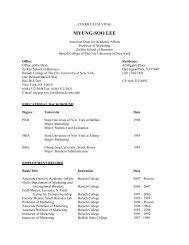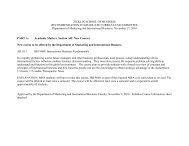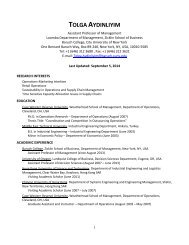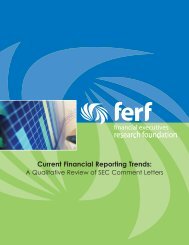Valueat-Risk
Forecasting the Return Distribution Using High-Frequency Volatility ...
Forecasting the Return Distribution Using High-Frequency Volatility ...
- No tags were found...
You also want an ePaper? Increase the reach of your titles
YUMPU automatically turns print PDFs into web optimized ePapers that Google loves.
δ 0 + X ′ tδ 1 > 0. The quantile regression model (see Koenker and Bassett, 1978) for the return in the<br />
location-scale model can thus be written as<br />
q t+1 (τ|F t ) = β 0 (τ) + X ′ tβ 1 (τ) (9)<br />
where β 0 (τ) = µ + δ 0 q η (τ) and β 1 (τ) = δ 1 q η (τ). Therefore, the quantile coefficients are determined<br />
both by the relationship between σ 2 t+1 and the explanatory variables X t as well as by the quantiles<br />
of the error term η t+1 . An advantage of this model is the fact that it abstracts from making an<br />
assumption about the error distribution, as it is instead the case for the parametric models discussed<br />
in the previous Section. In addition, it is also flexible in terms of the explanatory variables (or their<br />
transformations) that can be included in the vector X t .<br />
In the empirical application, we consider different specifications of the quantile regression model<br />
which use the realized volatility measures discussed in Section (2): the realized volatility (RV t ),<br />
the realized kernel RV (q) t for q = 2, the “jump-free” measure C t in Equation (7), C t together<br />
with the jump component J t in Equation (6), and RV N t which includes the overnight return. To<br />
differentiate volatility from variance in what follows, we denote with RM t a realized measure of<br />
variance (i.e., RM t is equal to RV t , RV (2) t , C t , [C t ,J t ], and RV N t ) and the volatility by its square<br />
root, rm t = √ RM t .<br />
The baseline specification that we consider is the Heterogeneous Auto-Regressive (HAR) model<br />
proposed by Corsi (2009) that consists of including the (past) realized volatility measure as well<br />
as its 5-day and 22-day moving average (that proxy for a trading week and month, respectively).<br />
The smoothed measures help to account for the slowly changing components of volatility and serve<br />
as a parsimonious way to model the long memory in the series. For the HAR specification, the<br />
vector of explanatory variables in Equation (9) is thus given by X t<br />
= [rm t , rm w t , rm m t ], where<br />
rm t represents the square root of a realized measure in day t and rm w t and rm m t represent the<br />
square root of the weekly and monthly moving average of the realized volatility RM t , that is,<br />
√<br />
rm w t = 1 ∑<br />
√ 5j=1<br />
5<br />
RM t+1−j and rm m t = 1 ∑ 22<br />
22 j=1 RM t+1−j. Using different high-frequency measures<br />
within the same HAR-type specification allows us to evaluate if any of these measures has<br />
significantly higher power to forecast the return distribution in comparison to the other measures.<br />
Given the evidence of an asymmetric effect of return surprises on volatility, we also consider two<br />
specifications that account for this characteristic within the quantile regression model. We achieve<br />
this by augmenting the HAR specification for the square root of realized volatility, rv t , with a<br />
nonlinear transformation of the return and the return standardized by the square root of realized<br />
volatility given by e t = r t /rv t . In particular, we consider the following specifications of the return<br />
quantile model in Equation (9):<br />
• X t = [e t , |e t |, rv t , rv w t , rv m t ]<br />
• X t = [|r t |, |r t |I(r t < 0), rv t , rv w t , rv m t ]<br />
Both specifications allow for an asymmetric effect on the quantiles depending on the return or the<br />
standardized return being positive or negative, similarly to the assumption introduced in the GJR<br />
model.<br />
8


